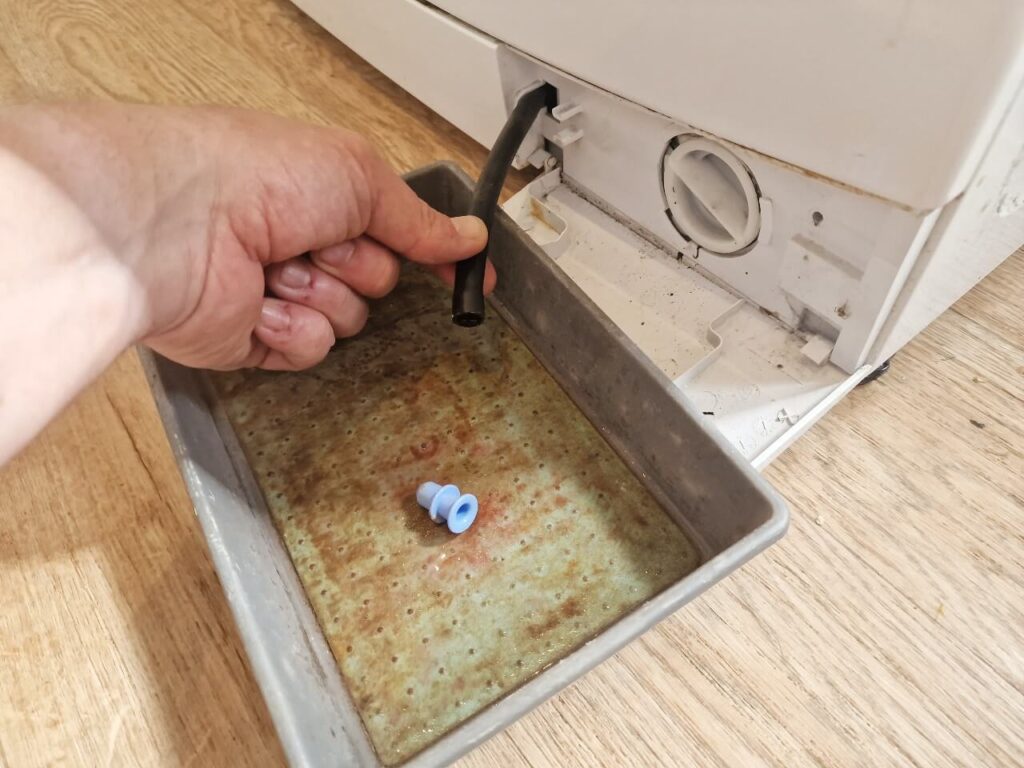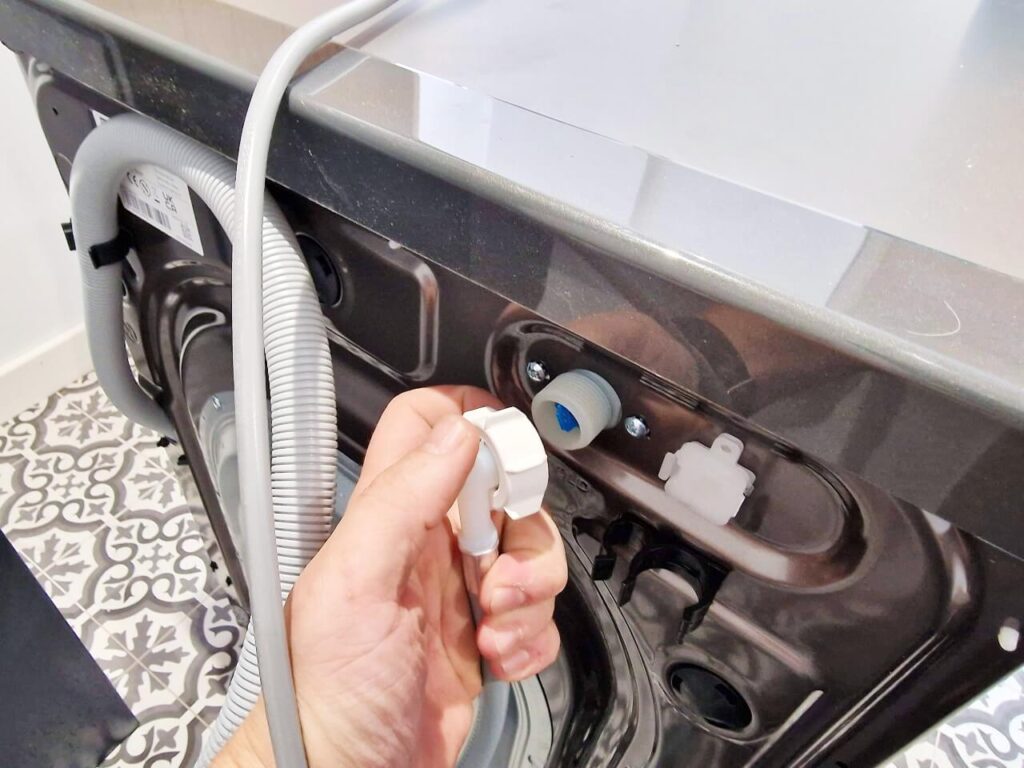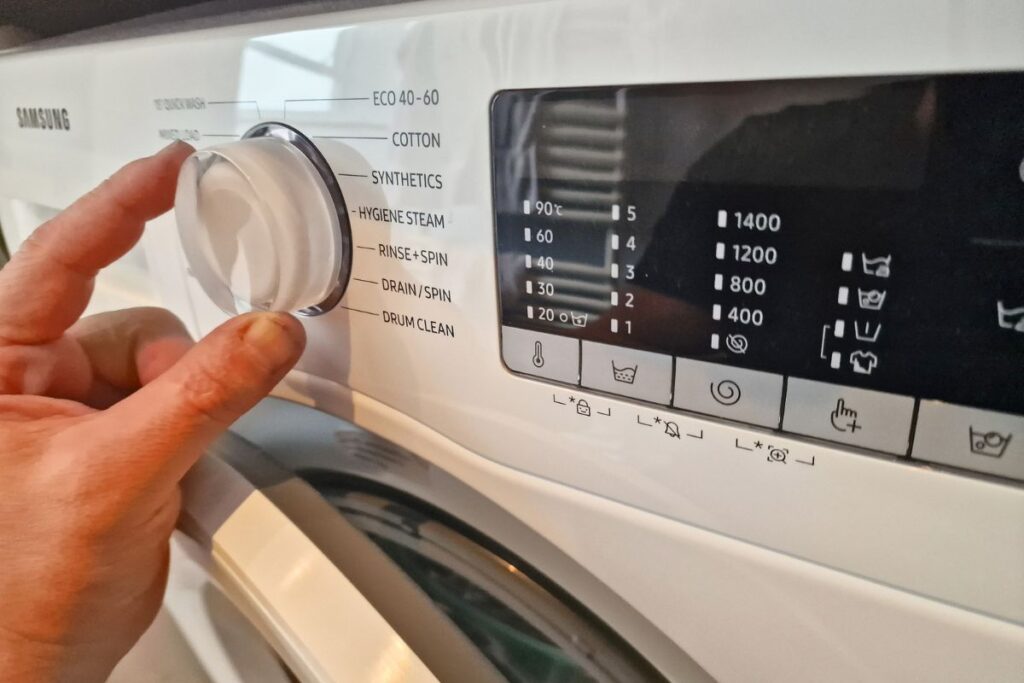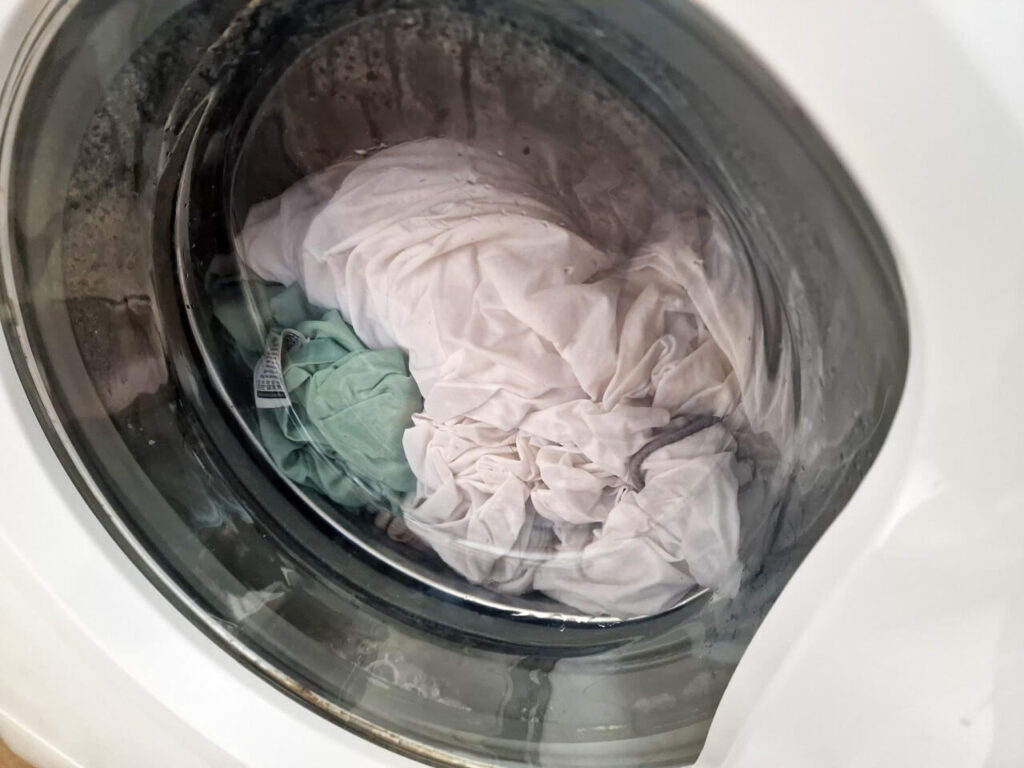Last updated on April 12th, 2024
Knowing how to drain a washing machine will help you when having problems and it won’t drain after a cycle.
A washing machine not draining is a common problem and has many possible causes. Something you can do to help avoid it happening is to make sure your pockets are completely empty before washing your clothes.
I have been a full-time plumber for over a decade and have fixed and fitted many washing machines over the years.
How to Drain a Washing Machine
Manually draining a washing machine is sometimes needed to empty the water out and save the laundry. Once it’s drained you can find and fix the washing machine problem.
Here are 4 ways to drain a washing machine:
- Drain from the mini drain hose
- Drain from the pump filter
- Scoop the water from the drum
- Drain from the drain hose
Drain From the Mini Drain Hose
Draining the water from the front mini drain hose (if you have one) is the easiest way to drain a washing machine.
Here’s how:
- Pull down the panel to access the pump filter and drain hose
- Pull out the mini drain hose
- Remove the cap to let the water out into a tray
- Refit the cap when the tray is full
- Empty the tray of water
- Repeat until no more water comes out
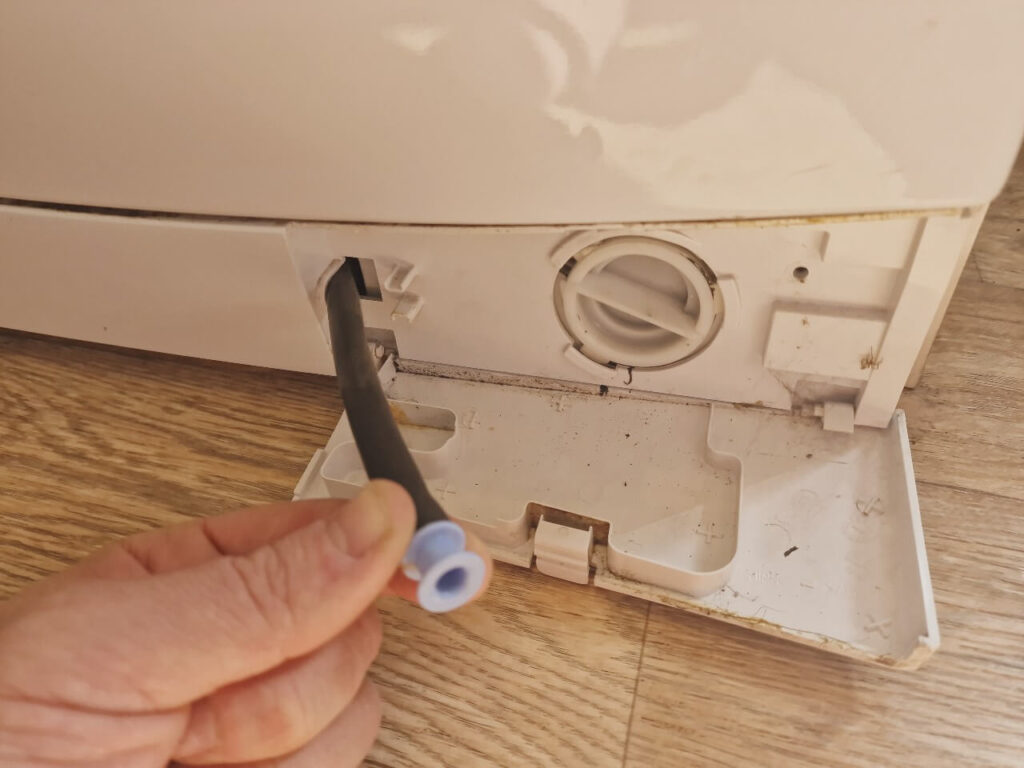
Drain From the Pump Filter
Draining the washing machine from the pump filter:
- Pull down the panel to access the pump filter
- Tilt the washing back and sit something solid underneath it
- Place a tray under to catch the water
- Unscrew the filter slowly (anti-clockwise) until water starts coming out and let the tray fill up
- Close the filter when the tray is full
- Empty the tray
- Repeat until no more water comes out
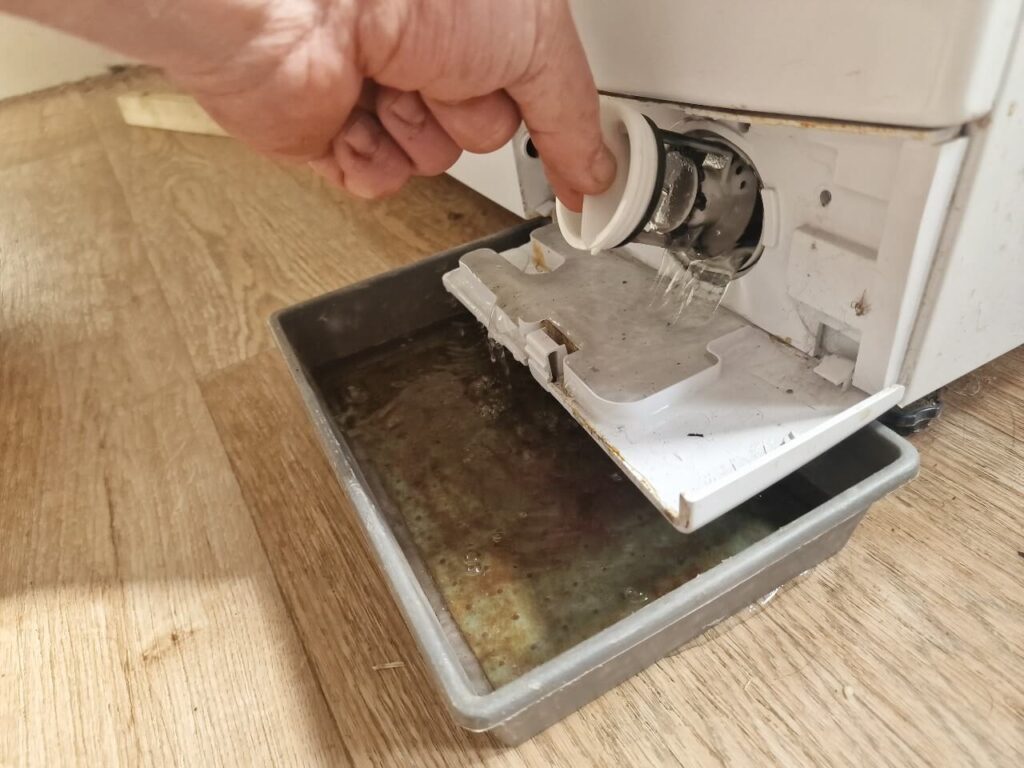
Scoop the Water out of the Drum
Scooping or syphoning the water directly out of the drum is another way to drain washing machines.
You will need to tilt the washer back so the water level drops below the door opening to open the door then start scooping out the water with a jug or tub.
Syphoning it out is also possible but you might get dirty water in your mouth briefly (not recommended for most people).
Here’s how to syphon:
- Hold a rubber hose down to the lowest point in the drum
- Suck the hose hard until the water is nearly at your mouth (hard to tell, I know)
- Put the end of the hose into a bucket. It must be lower than the end that’s in the drum
- Watch that bucket fill up
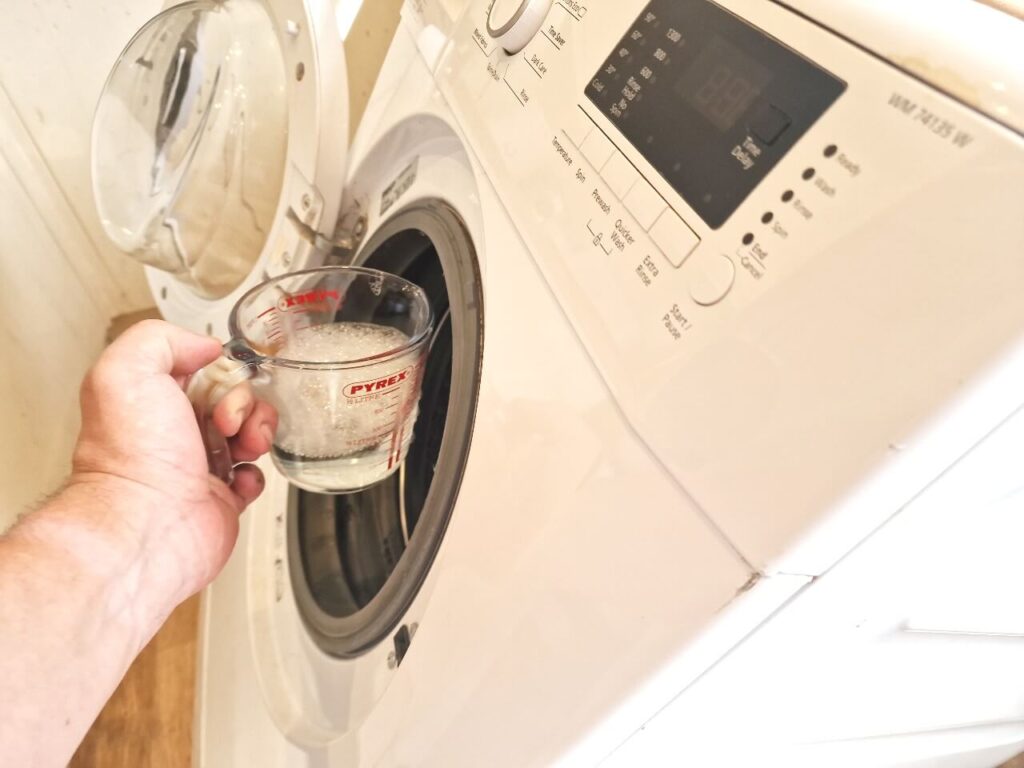
Drain From the Drain Hose
The main drain hose on the back of a washer is sometimes connected at the bottom. If so then you can drain it from here.
If you can move the washer quite easily or have easier access to the back of it in an open space, then draining it from the main drain hose is the quickest way to do it.
The drain hose needs to be disconnected from wherever it is connected to and laid flat on the floor. The water should just come out if it’s not blocked. Ideally outside.
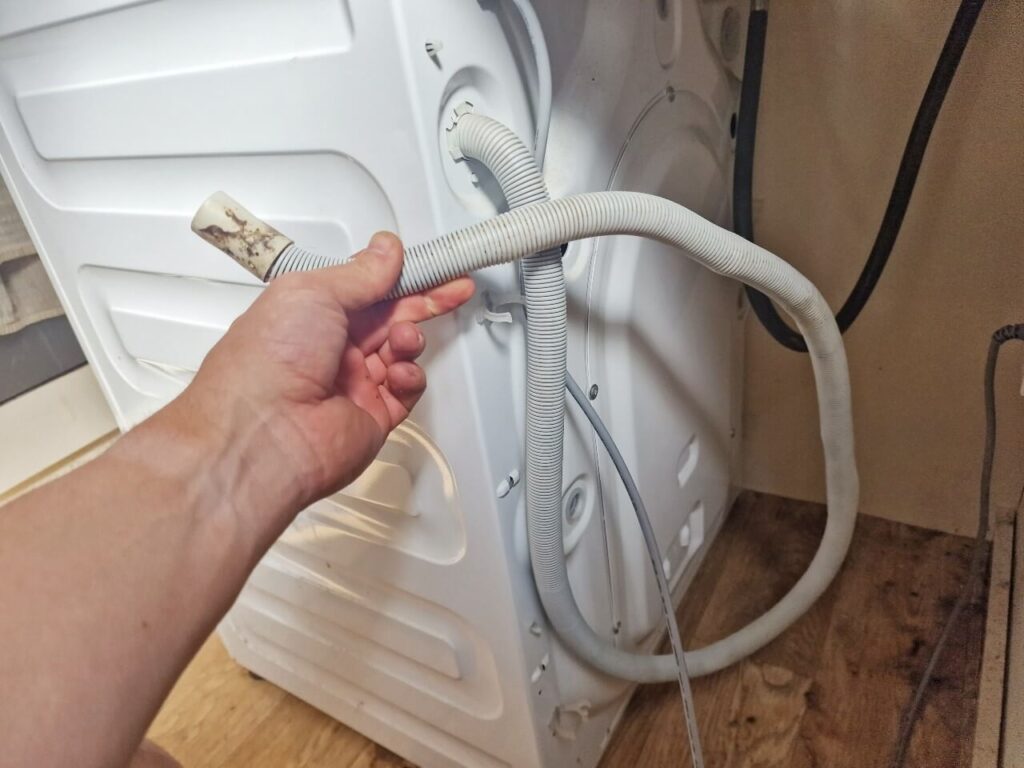
Why is My Washing Machine Not Draining?
Your washing machine not draining can be because of many reasons but usually it’s either the drain hose being blocked, or the drain pump filter has something in there that shouldn’t be.
After you have drained the water out of the washer, you should check the drain pump filter for any obstructions in there like coins, bra wires, hair clips, or any number of objects can be found in there and cause problems.
You should also check the drain hose by disconnecting it and squeezing it all the way along to feel for anything inside and make sure there are no kinks stopping the water from flowing through.
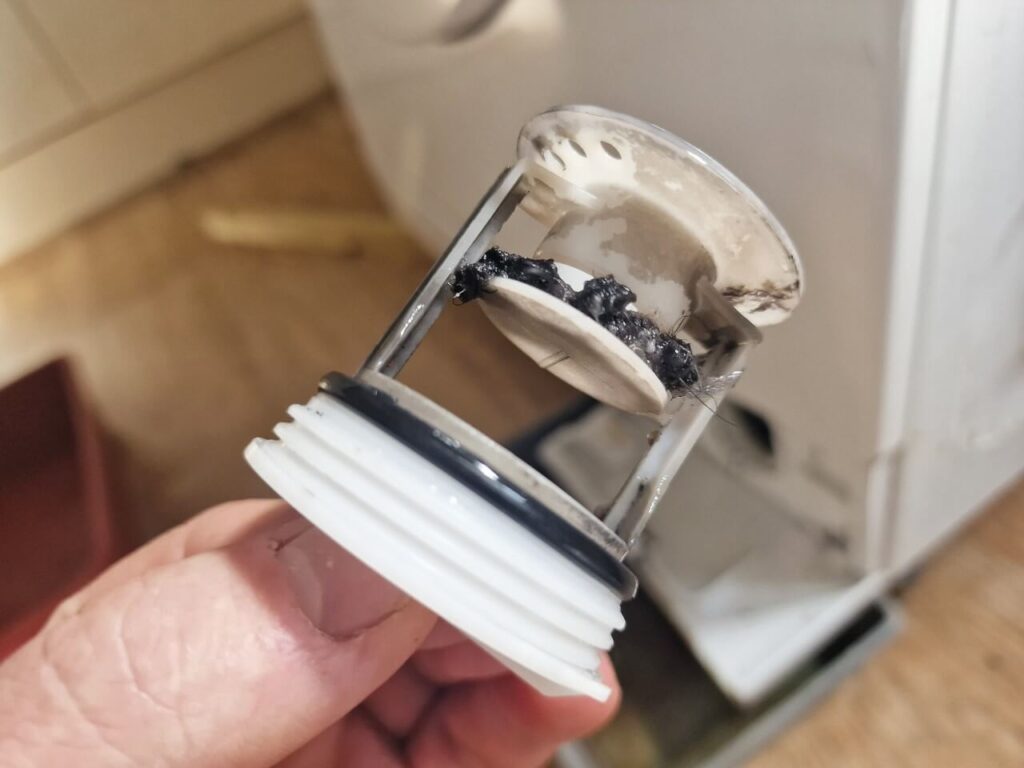
Summary
Learning how to drain a washing machine without flooding the place is a handy thing to learn and is quite easy most of the time.
Make sure to have a couple of big towels handy to catch up any spilt water. Using a tray to drain the water into with a full-size bucket nearby for emptying the tray into is my preferred method.
Regular washing machine cleaning is highly recommended to reduce the risk of future problems.
Feel free to ask me any questions in the comment section below and I’ll try my best to help.
Please share this post if you find it helpful.

